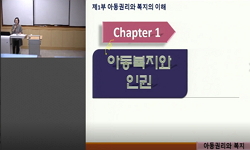This study aims to look into the present status of low fertility and its cause and currently- implemented childcare policies, and to discuss the childbirth promotion policy as a child welfare policy in the light of children. Concerns over the sustaina...
http://chineseinput.net/에서 pinyin(병음)방식으로 중국어를 변환할 수 있습니다.
변환된 중국어를 복사하여 사용하시면 됩니다.
- 中文 을 입력하시려면 zhongwen을 입력하시고 space를누르시면됩니다.
- 北京 을 입력하시려면 beijing을 입력하시고 space를 누르시면 됩니다.
https://www.riss.kr/link?id=A103912513
- 저자
- 발행기관
- 학술지명
- 권호사항
-
발행연도
2012
-
작성언어
English
- 주제어
-
등재정보
KCI등재후보
-
자료형태
학술저널
-
수록면
67-83(17쪽)
-
KCI 피인용횟수
0
- 제공처
-
0
상세조회 -
0
다운로드
부가정보
다국어 초록 (Multilingual Abstract)
This study aims to look into the present status of low fertility and its cause and currently- implemented childcare policies, and to discuss the childbirth promotion policy as a child welfare policy in the light of children. Concerns over the sustainable development possibility of Korean society are spreading due to the world’s lowest fertility rate. The significant reasons of the low birthrate in Korea are: 1) Instability in female employment due to tightness of labor market; 2) Social environment that does not allow women to have both work and family (social recognition, lack of system); 3) High expense in bringing up a child and education; 4) Late marriage, increase in unmarried and family-related matters; and 5) Increase in Non-Cohabitation Couples who spend more than at least three days per week at separate residences. The low fertility problem is not one that is generated by a certain reason, and accordingly, it’s impossible to find a solution to the problem using a certain kind of countermeasure. Therefore, the fertility policy effects can be produced only after detailed countermeasures in each field are set up and they are promoted continuously and in an integrated manner with a long-term view. The policy to meet the above mentioned matters should be sought in connectivity with many realms, such as a children, women, family, childcare, education, employment, and economy in the midst of the changes in general socio-economic environments.
참고문헌 (Reference)
1 Ministry of Health and Welfare, "The second low fertility aging society master plan" 2011
2 National Statistical Office, "The present status and characteristics of a household which has family members in other regions, shown in the result of the population census: 2010" 2012
3 Ministry of Health and Welfare, "Saeromaji plan 2015" 2008
4 Kim, K. W., "Policy of birth encouragement and child welfare in Korea" 2006
5 National Statistical Office, "Estimation of future population" 2006
6 Han, Y. O., "A study of the impact of the rearing support policies on the willingness of chilbirth" Graduate School of Kyungwon University 2012
7 Ministry of Health and Welfare, "A complement to master plan for low fertility aging society" 2008
8 National Statistical Office, "2011 Birth statistics" 2012
9 National Statistical Office, "2009 Birth statistics" 2010
1 Ministry of Health and Welfare, "The second low fertility aging society master plan" 2011
2 National Statistical Office, "The present status and characteristics of a household which has family members in other regions, shown in the result of the population census: 2010" 2012
3 Ministry of Health and Welfare, "Saeromaji plan 2015" 2008
4 Kim, K. W., "Policy of birth encouragement and child welfare in Korea" 2006
5 National Statistical Office, "Estimation of future population" 2006
6 Han, Y. O., "A study of the impact of the rearing support policies on the willingness of chilbirth" Graduate School of Kyungwon University 2012
7 Ministry of Health and Welfare, "A complement to master plan for low fertility aging society" 2008
8 National Statistical Office, "2011 Birth statistics" 2012
9 National Statistical Office, "2009 Birth statistics" 2010
동일학술지(권/호) 다른 논문
-
The Effects of Color Stimuli on Children`s EEG
- 대한아동복지학회
- ( Eun Joo Hong )
- 2012
- KCI등재후보
-
Determinants of Internalized Problems of Child Abuse Victims in Multicultural Families
- 대한아동복지학회
- ( Hwa Jung Jang )
- 2012
- KCI등재후보
-
- 대한아동복지학회
- ( Yong Woo Cho )
- 2012
- KCI등재후보
-
A Reflective Discussion of Birth Encouragement Policy and Child Welfare in Korea
- 대한아동복지학회
- ( Kwang Woong Kim )
- 2012
- KCI등재후보
분석정보
인용정보 인용지수 설명보기
학술지 이력
| 연월일 | 이력구분 | 이력상세 | 등재구분 |
|---|---|---|---|
| 2023 | 평가예정 | 재인증평가 신청대상 (재인증) | |
| 2020-01-01 | 평가 | 등재학술지 선정 (재인증) |  |
| 2019-01-01 | 평가 | 등재후보학술지 유지 (계속평가) |  |
| 2017-01-01 | 평가 | 등재후보학술지 선정 (신규평가) |  |
| 2015-12-01 | 평가 | 등재후보 탈락 (계속평가) | |
| 2013-01-01 | 평가 | 등재후보학술지 유지 (기타) |  |
| 2012-04-17 | 학술지명변경 | 한글명 : 아동복지연구 -> 아시아아동복지연구외국어명 : Korean Journal of Child Welfare -> Asian Journal of Child Welfare and Development |  |
| 2012-01-01 | 평가 | 등재후보 1차 PASS (등재후보1차) |  |
| 2010-01-01 | 평가 | 등재후보학술지 선정 (신규평가) |  |





 KCI
KCI






